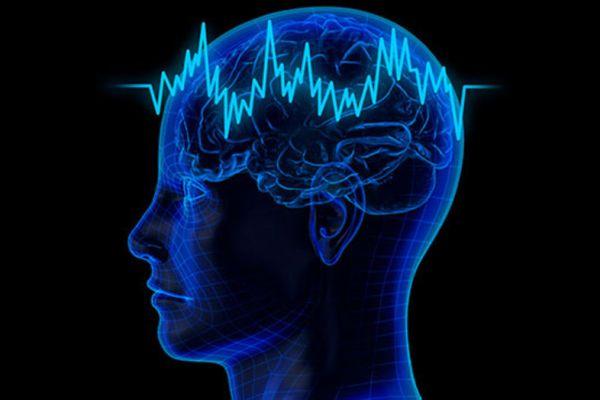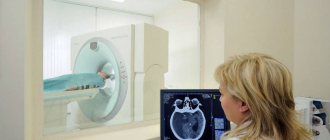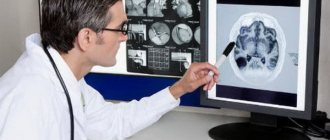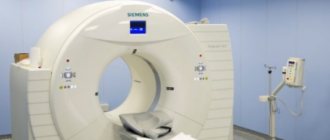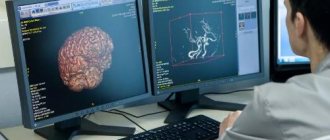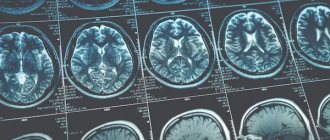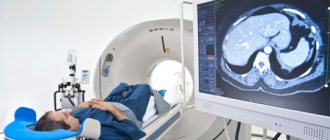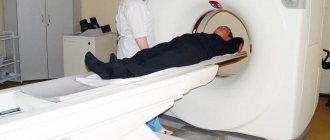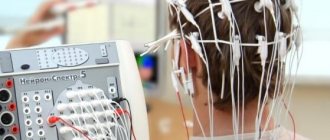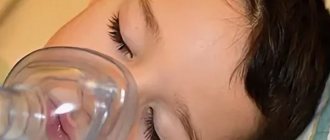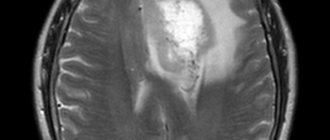Does EEG show autism?
Why are electroencephalograms often recommended for people with neurological conditions such as autism, intellectual developmental disabilities, or global developmental delay?
The occurrence of seizures in individuals with neurodevelopmental disorders is significantly higher than in the typically developing population. For example, epilepsy occurs in 1-2% of the general population, but in 20-40% of patients with autism. Abnormal EEG occurs in approximately 2-4% of the general population, but in 50-80% of patients with autism.
Why do seizures occur so often in autism and other nervous system disorders? Brain dysfunction that results in developmental delays also predisposes to the development of seizures. Thus, the EEG does not show autism, but the presence or absence of epileptic activity, and based on this and other indicators, a specialist can make an accurate diagnosis.
Disorganization of the BEA of the brain - what is this diagnosis?
Practice shows that a diagnosis can only be confirmed by the patient’s complaints about certain abnormalities and complaints about his well-being. Such changes in the body are accompanied by dizziness, discomfort, and headaches that do not stop for a long time. Very often, such deviations can be found in the EEG of people who do not complain about anything and
absolutely healthy.
If the conclusion to the EEG indicates information about significant diffuse changes in combination with a significant decrease in the level of convulsive readiness, then all this will mean that the person is predisposed to the manifestation of epilepsy. In other words, the cerebral cortex is affected by foci of bioelectrical activity at an increased level. This can cause a person to experience frequent epileptic seizures.
In a normal state, a person’s electromagnetic activity is diagnosed as conditionally normal. When conducting electroencephalography, activities may be revealed that are slightly different from the norm, but have not yet developed into pathology. In such cases, doctors in conclusion indicate that there are slight diffuse changes in the bioelectrical activity of the brain.
If disorganization of bioelectrical activity is detected in a person, impaired blood circulation in the brain is diagnosed.
EEG for autism: to do or not
Children with autism are usually prescribed EEG by neurologists for the following reasons:
- as an aid in the diagnosis of epilepsy accompanied by seizures (epilepsy may be associated with autism in early childhood and adolescence);
- to check for problems with dementia;
- when studying sleep disorders;
- to monitor brain activity during sleep or wakefulness.
Research shows that epilepsy is most often associated with autism.
Diagnostics
The main diagnostic method is neuroimaging of brain structures using MRI or CT. Functional techniques include electroencephalography. MRI of the brain is performed to identify the reasons that provoked moderate changes in bioelectrical activity indicators of a diffuse nature. During an EEG study of the brain, the diagnosis of changes in biopotentials of a diffuse nature is made on the basis of three confirmed factors:
- The presence of polymorphic activity of a polyrhythmic type (many diverse rhythms at the same time) against the background of the absence of a dominant biorhythm.
- Irregular asymmetry with disorganization of basic rhythms. It is manifested by amplitude disturbances, coincidence of phases of waves coming from symmetrical parts of the head.
- Pathological fluctuations of mixed order. In the main biorhythms alpha, beta, delta, theta, significant deviations from the normal amplitude are observed.
Disorganization of bioelectrical activity indicators is a deviation in the functioning of the brain that reflects the presence of a pathological process in brain structures, which contributes to the early diagnosis of central nervous system diseases. There are main types of biorhythms:
- Alpha waves. Frequency 8-13 Hz. The rhythm is associated with a natural state of peace and relaxation; in healthy people it appears when the eyes are closed, if the person is in a darkened room or resting.
- Beta waves. Frequency 14-40 Hz. Normally, they reflect the activity of cognitive processes occurring in the brain. In healthy people, the beta rhythm appears at the moment of concentration, observation of interesting events, and active mental activity.
- Delta waves. Frequency 1-4 Hz. Normally, it reflects recovery processes in the body, low physical and mental activity. In healthy people it appears during sleep. The excessive presence of the delta rhythm is always observed in various neurological disorders, indicating a dysfunction of attention and deterioration of cognitive abilities.
- Theta waves. Frequency 4-8 Hz. Normally, the theta rhythm indicates a change in the state of consciousness, observed at the moment between sleep and awakening. Often the condition is accompanied by the appearance of unconscious, mental images. When the theta rhythm increases, a healthy person usually falls asleep. A pathological increase in the theta rhythm is associated with emotional overstrain, mental disorders, asthenic syndrome, states of concussion and confusion.
With diffuse brain damage, various deviations of normal biorhythms are observed. A neurophysiologist interprets the results of the electroencephalogram. If the theta rhythm disappears, the doctor diagnoses brain death. A significant decrease in the theta rhythm indicates deep sleep. In brain bioelectrical oscillations, one rhythm is always dominant, and three other types of basic waves are present.
Disturbance of synchronicity of biorhythms against the background of smoothing of the EEG curve indicates pathology of the vascular system. Theta rhythms and delta rhythms indicate a pre-stroke state. If, after a traumatic brain injury, an examination reveals increased epileptiform activity, epilepsy may develop in the future. A significant slowdown of the alpha rhythm is often observed in parkinsonism.
Preparing a child for an EEG
Before the EEG, it is important to tell your neurologist if your child is taking any medications. For example, sedatives, hypnotics, muscle relaxants and anticonvulsants distort the results of the electroencephalogram. It is important to avoid food and drinks containing any form of caffeine for 8 hours before your procedure. Hair should be clean, without applying oils, sprays, creams or lotions, or conditioners. Sometimes they ask you not to sleep for 4-5 hours before the test (for the most accurate result).
A child with autism must be prepared for the procedure in advance due to their behavioral and mental characteristics.
Manifestations and clinic
With a disorganized BEA, it is impossible to notice any manifestations (either to others or to oneself).
Moderate diffuse changes in BEA, if hardware diagnostics indicate a problem, but if diseases dangerous to health are not identified, will not appear immediately, but will intensify significantly over time.
Symptoms for moderate and severe dysfunction:
- decreased performance, chronic fatigue;
- decreased concentration of attention, intellectual abilities, deteriorating memory, these manifestations are especially noticeable in preschoolers and students;
- frequent chills, colds, aching in the muscles;
- hair and skin are dry, nails are too brittle;
- sexual activity is reduced to a minimum, weight fluctuates significantly;
- neurosis, psychosis and depression occur;
- Hormonal imbalances and problems with stool begin.
Research: “Lack of connections between individual brain regions in autism”
Scientists in numerous studies using electroencephalograms have concluded that children diagnosed with ASD have increased activity in certain areas of the brain, and decreased activity between distant ones.
These studies provide insight into the full range of challenges and benefits of people with ASD. Behavioral, speech and psycho-emotional skills require a well-coordinated neural connection between certain areas of the brain. Missing neural connections or connections with reduced activity explain the developmental disorders in people with autism.
However, some people with ASD can achieve incredible heights in a certain area - this is explained by increased neural activity in certain brain areas.
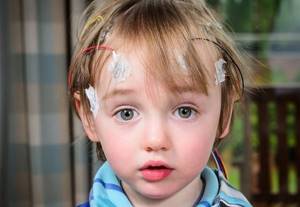
Scientists claim that their discovery will correct some symptoms of autism in the early stages by stimulating neural connections in the brain.
Diagnosis and treatment of BEA brain
If the brain tissue is inflamed or covered with scars, or if cells die, this process can be shown by an electroencephalogram. This diagnostic method helps not only to characterize the process, but also to reliably determine the location of the localization, and therefore make the correct diagnosis. The EEG examination is completely painless.
The doctor should carefully examine the medical history. The pattern of manifestations of disorders can be seen in identical diseases of the nervous system.
A cap with electrodes is placed on the head. Through them, the process of neuron activity is recorded: how often oscillations occur, what is their amplitude, what is the rhythm of their work.
Electroencephalogram for autism: reviews
| Positive | Negative |
| In order not to injure the child, we asked for a CT and MRI of the brain, albeit with anesthesia, but quickly, accurately and without any problems. The only negative is that these studies are much more expensive than electroencephalography. If it were possible to reach an agreement with my son, we would go through with what was prescribed, but... alas. (Nina) | For us, all these suction cups on our heads are a total nightmare; our daughter won’t let us attach them to anything, and we also have to sit motionless for a long time. A neurologist prescribed an EEG for us, we went to a psychiatrist to find out how to cope with fear, and he told us that all these studies for autism are completely useless, since autism is diagnosed solely by behavioral indicators. Now I don’t even know what to do. (Anya) |
| We had an electroencephalogram performed at the age of 1.5 years. We were lucky that we slept soundly, so we drove around the city for an hour in a car to lull us to sleep, then they carefully carried us into the office, and we did everything. As the neurologist explained to us, it is necessary to exclude factors that could cause symptoms similar to autism. The diagnosis was confirmed, appropriate treatment was prescribed, which, by the way, is already showing positive results. (Sofia) | We are categorically against such torture for autistic children! This is incredibly stressful for them. Especially when they are wrapped in a towel or diaper and held by several doctors - it’s just darkness! (Taya) |
| We were prescribed this test at the age of 8, and we could negotiate with our son and keep him occupied for half an hour. So diagnosis was not a problem for us. As for expediency, I think everything that concerns the head needs to be fully examined in order to understand exactly what is happening to your baby. (Yana) | |
| MRI cannot show the neural patency of the brain, therefore, EEG is the only option to look at how impulses move through the brain and what abnormalities exist. We were tested in front of a monitor with bright pictures and cartoons. We can “get stuck” like this for hours, while the brain was in an active state, and the picture was painted in full. | |
| A good study, but while we went through it, we suffered, as a result, our son was given some kind of injection, which completely slowed him down and turned him into a “vegetable” - to say that I was scared is to say nothing. But, thank God, after 30 minutes the son began to behave as usual, and we passed the diagnosis. The diagnosis was confirmed as “Autism due to damage to the occipital part of the brain.” (Rita) |
For prevention purposes
To try to avoid diffuse changes in BEA, you should reduce as much as possible, and it is better to completely avoid the use of
alcohol, strong coffee/tea, tobacco.
You should not overeat, overheat or overcool, you should avoid staying at altitude and other adverse effects.
A plant-dairy diet, frequent exposure to air, minimal exercise, and adherence to the most appropriate rest and work regimen are very useful.
It is prohibited to work near fire, on water, near moving mechanisms, on any transport, or to come into contact with toxic products. Living constantly with nervous tension and fast rhythm.
